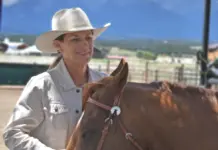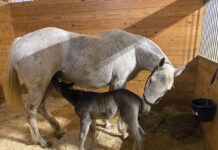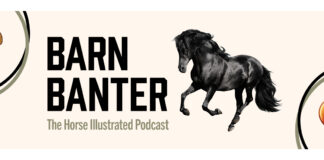 The University of Georgia College of Veterinary Medicine prides itself on being a leader in regional, national and international areas of teaching, research and service.
The University of Georgia College of Veterinary Medicine prides itself on being a leader in regional, national and international areas of teaching, research and service.
“We’re mostly recognized for poultry science and infectious diseases,” says Sheila Allen, DVM, Dipl. ACVS, dean of the college of veterinary medicine.
The college’s Poultry Diagnostic Center, Southeastern Cooperative Wildlife Disease Study and Infectious Disease Department are the best in the nation, according to the college.
With Georgia being the highest-producing poultry states in the U.S., the college’s Poultry and Diagnostic Research Center concentrates on infectious diseases and the development of preventive measures. It is recognized as an international leader in avian medicine. In addition, the college offers a master’s program in avian medicine–the only program of its kind–for veterinary students.
“The poultry unit has been our crown jewel,” Dr. Allen reports.
At a Glance Location: Athens, Ga. Opening Date: 1946 Number of Students: 384 Programs Offered: DVM, DVM MPH, DVM Ph.D., Ph.D., Masters, Masters of Avian Medicine Website: www.vet.uga.edu |
The Southeastern Cooperative Wildlife Disease Study provides diagnostic services throughout a 16-state region (Alabama, Arkansas, Florida, Georgia, Kansas, Kentucky, Louisiana, Maryland, Mississippi, Missouri, North Carolina, Ohio, South Carolina, Tennessee, Virginia and West Virginia plus Puerto Rico). The study funds regional wildlife research and service projects and allows each state’s agency to share facilities, vehicles, scientific equipment and salaries to indentify diseases. In doing so, each agency has access to more complex and dependable equipment that can’t be afforded individually. By joining forces, the SCWDS serves as common ground for wildlife experts to work closely with private, state and federal authorities toward a common goal.
“Through this study, we identify animal infectious diseases [whether wildlife or domesticated animals] and where the diseases are spreading,” Allen adds.
The college is dedicated to safeguarding public health through its Department of Infectious Diseases. In fact, this department has become the college’s main center of excellence, according to Dr. Allen, with research focusing on avian influenza, molecular bacteriology and parasitology, to name only a few subjects. The program, which started at the inception of the college in 1946, mainly focuses on animals that affect human health, i.e., food-producing animals.
“Our college has invested a lot of resources on infectious disease research,” Allen says. “We focus on [diseases] that affect animals and how they affect people.”
The Department of Infectious Diseases touches on many other groups at the college, including the Poultry Diagnostic Center and the Southeastern Wildlife Disease Study.
Overall, the college is dedicated to studying emerging infectious diseases affecting not only animal, but human health as well.
“We want to help the population’s health,” Allen adds.
The college has also been popularly recognized for its teaching, with faculty focusing on the use of technology in the classroom. James Moore, professor and head of large animal medicine at the college, with assistance from Malcom Smith and Thel Melton, created The Glass Horse, a computer-assisted learning program that teaches students through 3-D real-time interactive, instructional media.
The Glass Horse was created to give students a better understanding of a horse’s gastrointestinal tract. The program allows students to explore an equine’s anatomy with 3-D simulations and animations. Interactivity and self-assessment are main components of this interactive software program.
“The Glass Horse is now used all around the world,” Allen says. “We want to continue using technology to its fullest extent to enhance teaching in the lab.”
———————————–
Click here for a list of previous Vet School Spotlights.





